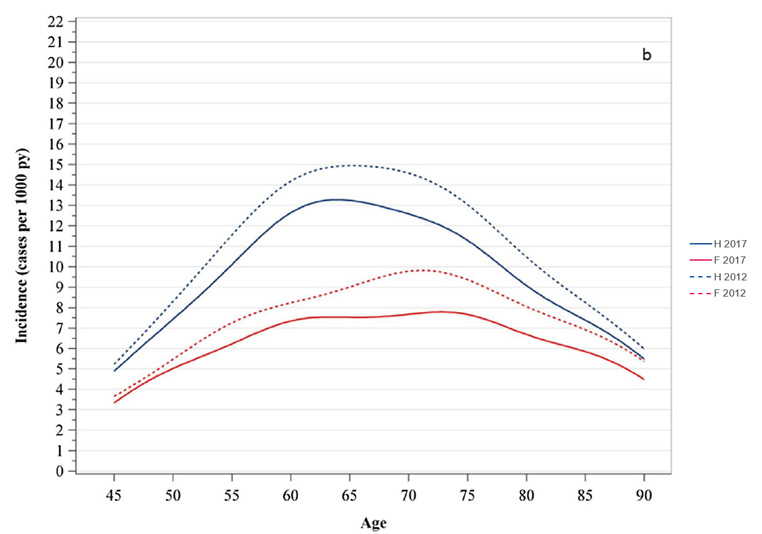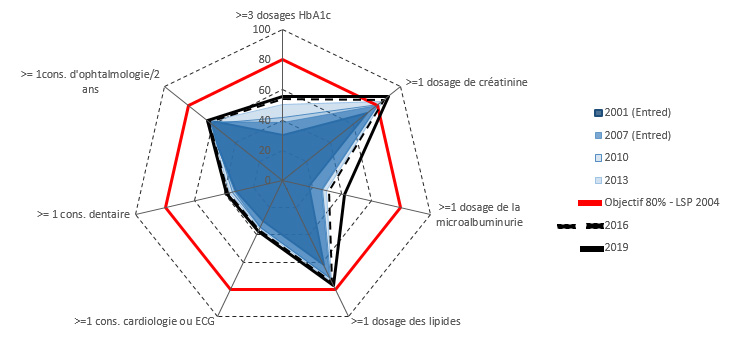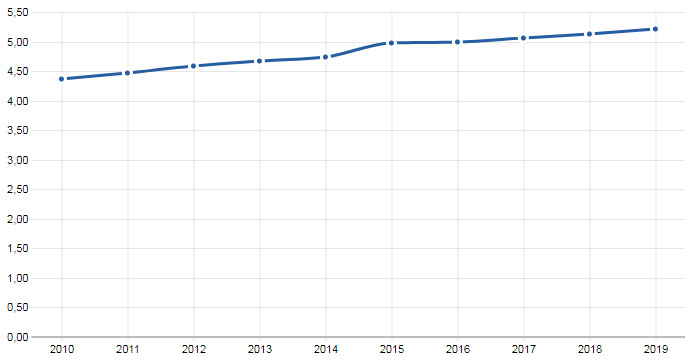New diabetes monitoring indicators closer to the territories
On the occasion of World Diabetes Day, Public Health France is making available on Géodes the prevalence rates of pharmacologically treated diabetes from 2010 to 2019, at the departmental level. New indicators concerning the occurrence of diabetes-related complications and the frequency of examinations recommended as part of its monitoring are also available for the years 2010–2013–2016–2019, at regional level.
All the indicators, made available on Géodes, make it possible to describe the situation of diabetes in France in 2019, its evolution since 2010, as well as the territorial disparities which remain marked.
Diabetes key figures and results in France
Diabetes: an ever-increasing disease
- About 3.5 million people were treated with medication for diabetes in France in 2019, i.e. 5.2% of the population
- Diabetes is more common in men than in women, with the exception of overseas territories where women are the most affected.
- Very marked territorial disparities, with a frequency of diabetes:
- very high in the overseas departments and in Seine-Saint-Denis
- high in the departments of Val d’Oise and the North-East of the metropolis
- weak in the departments located to the West and in particular in Brittany
Crude prevalence rate of pharmacologically treated diabetes (all types) – men and women

Source: SNDS-DCIR, Insee. Operation Public health France
A recent study1, published in 2019, reports an increase in the frequency of diabetes treated with medication of +0.9%/year in men and +0.4%/year in women over the period 2010-2017. In addition, our indicators, available on Géodes, show that this moderate increase continues between 2017 and 2019. The study also shows a decrease in incidence (number of new cases per year): -2.6% in men and -3.9% among women from 2012 to 2017. This dynamic was observed regardless of the age group among those over 45 years old.
Evolution of the incidence of diabetes treated with medication between 2012 and 2017 in France in adults aged 45 and over, by sex

Evolution of the prevalence of diabetes treated with medication between 2010 and 2017 in France among adults aged 45 and over, by gender

In addition to diabetes treated with medication, it is important to remember that a significant proportion of people with diabetes are also treated with lifestyle and dietary measures (use of a more balanced diet and increased physical activity), a necessary prerequisite for drug treatment and that some people with diabetes go undiagnosed. In 2014-2016, the Esteban investigation2 highlighted a frequency of diabetes not treated by medication of 1.2% in adults aged 18 to 74 residing in Metropolitan France and 1.7% who were unaware of their diabetes. Of all the people identified as being diabetic in this survey, 23% were unaware of their diabetes.
Diabetes-related complications remain frequent but are stabilizing
In 2019, chronic complications related to diabetes remain very frequent with very marked territorial disparities. The occurrence of lower limb amputations and transmural myocardial infarctions has been relatively stable since 2010. The occurrence of strokes, which increased over the period 2010-2016, has stabilized since 2016. Hospitalizations for foot wounds continue to increase. However, it is necessary to remember that if foot wounds constitute a serious complication of diabetes, their early management, possibly during hospitalization, can prevent aggravation, which can lead to amputation.
Evolution of the incidence of hospitalizations for diabetes-related complications in France between 2010 and 2020

Learn more about the standardized incidence rates of diabetes-related complications on Géodes:
The frequency of carrying out the recommended examinations has increased slightly since 2016
The Public Health Law of 2004 recommended that in 2008, 80% of people with diabetes benefit from all the examinations recommended in the follow-up of diabetes. This follow-up is guided by the recommendations for care pathways established by the High Authority for Health.
If the frequency of annual creatinine assays exceeds this threshold of 80%, the other examinations still did not reach it in 2019.
- Lipid assay frequency increasing (+2 points since 2016) and approaching the threshold (77% in 2019)
- Frequency of performing the 3 annual HbA1c assays at 56% in 2019 (+2 points since 2016)
- Strong increase in microalbuminuria (more than 10 points between 2016 and 2019 to reach nearly 42%) with regional variability in the performance of this assay, particularly in Réunion, which reaches a frequency of performance of this assay of 59%.
The performance indicators for the recommended examinations made available under Géodes testify to the efforts that have been made for several years, but also to those that remain to be done so that a maximum number of people with diabetes have follow-up in accordance with the recommendations.
Proportion of people with diabetes treated pharmacologically having benefited, in private practice, from the recommended follow-up examinations, whole of France, 2001-2019

Diabetes and continuity of care: a health issue in the face of COVID-19
Public Health France recalls the importance for people with diabetes to protect themselves against COVID-19 by respecting physical distancing measures and the application of barrier gestures. Indeed, people who have unbalanced diabetes or who have diabetes-related complications are at higher risk of a severe form of COVID-19. In this context, the clinical and biological monitoring of diabetes is essential.
It helps to maintain a better glycemic balance, which can be, moreover, deteriorated by periods of confinement. Indeed, the decrease in physical activity, dietary imbalance and anxiety induced by confinement can have an impact on glycemic balance. Clinical and biological follow-up also allows early diagnosis of complications and their management. It is therefore essential in this pandemic period not to postpone this care and not to hesitate to contact your doctor.
Read also :
1 Is the type 2 diabetes epidemic plateauing in France? A national population-based study. Fuentes S, Mandereau-Bruno L, Regnault N, Bernillon P, Bonaldi C, Cosson E, Fosse-Edorh S. Diabetes Metab. 2020 Jan 7:S1262-3636(20)30001-X. doi: 10.1016/j.diabet.2019.12.006.
2 Prevalence of prediabetes and undiagnosed type 2 diabetes in France: Results from the national survey ESTEBAN, 2014–2016, Grégory Lailler, Clara Piffaretti, Sonsoles Fuentes, Hadja Djessira Nabe, Amivi Oleko, Emmanuel Cosson, Sandrine Fosse-Edorh, Diabetes Research and Clinical Practice, Volume 165, 2020, 108252, ISSN 0168-8227, https://doi.org/10.1016/j.diabres.2020.108252.













